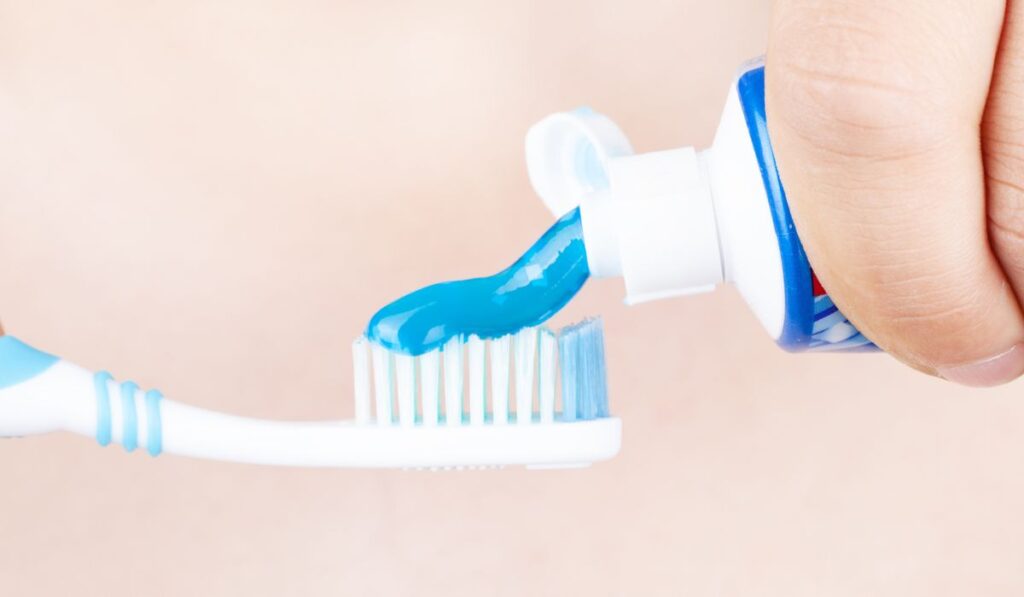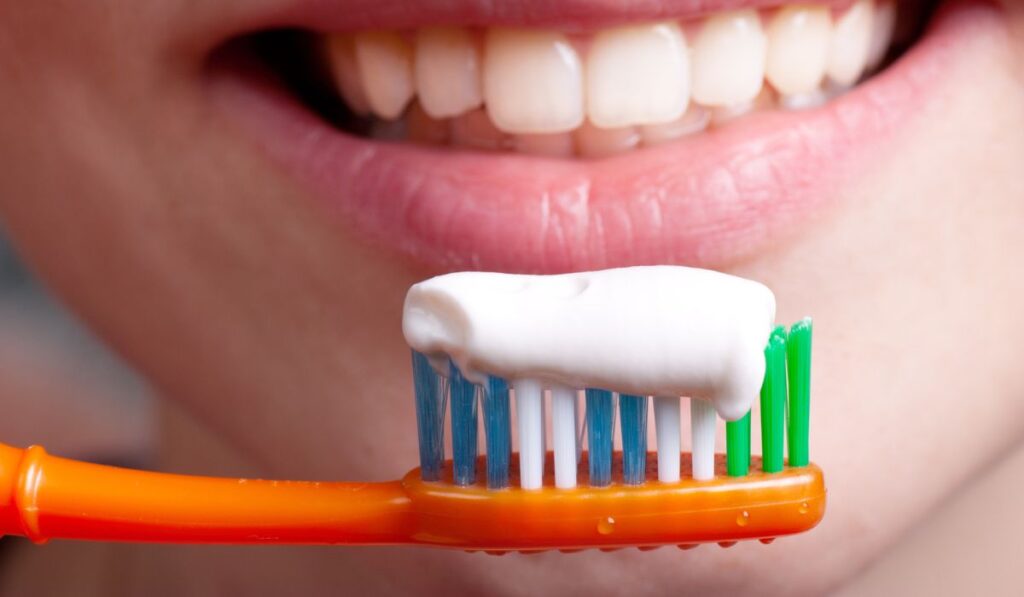When you drop a tiny lump of toothpaste in a wet area of your sink, you may notice that what seems to be a dry portion around the toothpaste quickly forms. So, what’s going on here? Is toothpaste what is known as a hydrophobic — or water-repelling — substance?
Toothpaste isn’t hydrophobic. In fact, it’s made up of 20-40% water. However, toothpaste contains detergents that reduce the surface tension of water, making it spread out. When toothpaste comes into contact with a drop of water, it can therefore give the illusion that the water’s being repelled.
The toothpaste you use daily has a whole bunch of ingredients, including surfactants whose parts behave differently in water. However, if you try to figure out how everything works separately, the chemistry could take a toll on your sanity. Therefore, we’ll only touch on the necessary bits. Let’s jump right in!
Is Toothpaste Hydrophobic?

We can’t say that toothpaste is generally hydrophobic, because it’s actually made up of 20-40 % water. The real magic is that toothpaste contains detergents like sodium lauryl sulfate (SLS), which reduce the surface tension of water. This makes the water easily spread out, and the bulk of the toothpaste absorbs it.
If you’re not sure what “surface tension” is, it’s just the scientific buzzword for the effect that water molecules tend to attract each other strongly, making the surface of water look like a thin, fully-stretched elastic skin.
When you wet your finger, apply some toothpaste, then touch water droplets in a sink, the toothpaste actually draws in water. It does so because the detergent it contains lowers the surface tension of water, and the stronger forces between the sink surface and the water droplets cause the droplets to spread out.
The next thing you witness isn’t the water moving away from your finger; instead, it’s the droplets being spread out and around into a thin layer around your finger.
Surfactants in Toothpaste
Your toothpaste likely contains a surfactant like sodium lauryl sulfate (SLS), usually with a concentration range of 0.5 to 2%.
SLS is basically a detergent, but it’s not as strong as what you use to clean your laundry. The word surfactant comes from “surface active agent.” Surfactants stir up activity on the surface you intend to clean, making it easy for you to wash away dirt or, in this case, gunky stuff like plaque from your teeth.
The effect of the SLS found in toothpaste is to lower the surface tension of water, allowing the surface of your teeth to get wet easily as the dirt is carried away.
Let’s consider the scenario where you’ve got a giant bead of water on a smooth, ceramic sink surface. The surface is pretty hydrophobic, and the water will maintain its beady shape.
But when you introduce a tiny bit of toothpaste, the water doesn’t run away — it’s actually rushing in to wet the surface. Whatever you’re seeing is the new edge of the giant water bead, which is now spreading on a surface free from surfactant.
How Surfactants Work in Toothpaste
There’s not too much complicated science that goes into how surfactants work. Each of their molecules has a hydrophilic (water-loving) head and a hydrophobic (water-hating) tail. The hydrophobic tail lodges into the dirt, while the hydrophilic head is surrounded by water.
When there’s enough surfactant molecules in a solution (like the mixture of water and toothpaste), they join forces to form structures called micelles. During this process, the hydrophilic heads align in the water, while the tails combine in the center of the micelle structure that’s free from water.
The interesting bit of this process is that micelles work as a unit to remove dirt. The hydrophobic tails feel more attracted to the dirt and surround them, while the hydrophilic heads pull the surrounded dirt off the surface to be cleaned and go into the cleaning solution.
The micelles later reposition themselves with the tails, suspending the dirt in the middle of the structure. When you rinse the surface (your teeth), you wash away the surfactant molecules and the dirt they’ve trapped.
Mixing Water With Toothpaste

Toothpaste has abrasive ingredients, and using a dry toothbrush only increases friction with the bristles. On the other hand, wetting the toothbrush lightly adds moisture, which guarantees a more pleasant brushing experience for most people.
While toothpaste contains a small amount of water that will naturally foam the paste, dental experts agree that wetting the toothbrush a little bit before you brush can make the experience more comfortable. And if your brushing experience is more comfortable, it’s easier to brush for the recommended 2 minutes.
However, if you wet the toothbrush too much, you might mix the toothpaste with too much water. This will dilute it and reduce its cleaning effects. Dentists advise that if you must wet your toothbrush before or after applying toothpaste, you should probably grab a brush with softer bristles, like this one (on Amazon).


